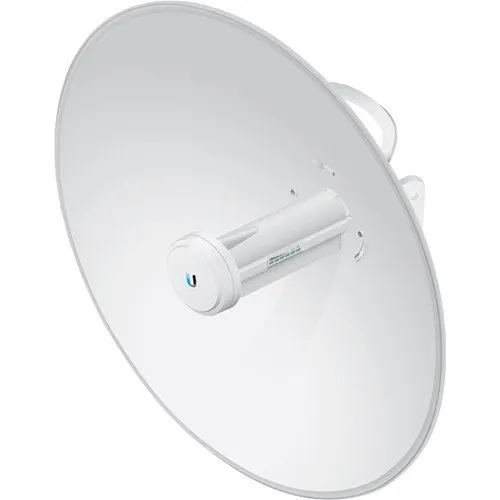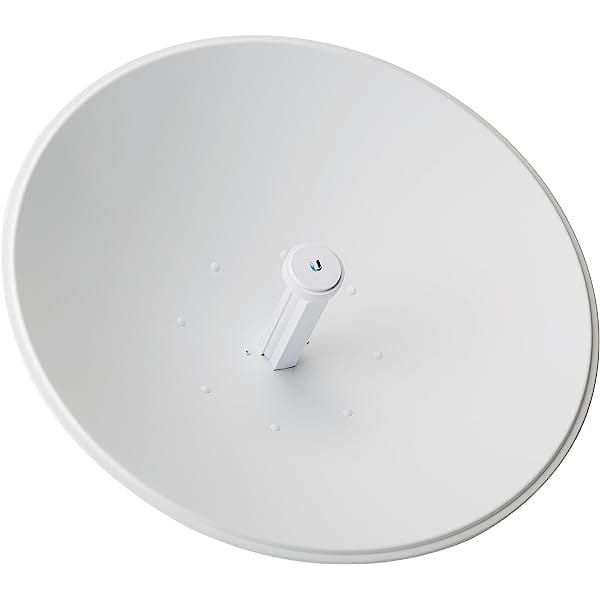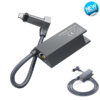Ubiquiti PowerBeam 5AC-500 (PBE-5AC-500): The High-Performance airMAX Bridge
The Ubiquiti PowerBeam 5AC-500 (PBE-5AC-500) is a high-performance, carrier-class radio and antenna system designed for demanding point-to-point (PtP) and point-to-multipoint (PtMP) wireless links. Part of Ubiquiti’s acclaimed airMAX ac product line, it delivers exceptional speed, range, and reliability for professional network deployments.
This complete guide dives into everything you need to know about the PowerBeam 5AC-500, from its technical specs to real-world performance.
Overview and Key Features
The PowerBeam 5AC-500 is an integrated unit featuring a focused dish antenna and a powerful 5 GHz radio. It’s engineered for creating robust wireless bridges, making it a favorite for Wireless ISPs (WISPs), campus connectivity, security camera backhauls, and business network extensions.
Key Features at a Glance:
-
airMAX ac Platform: Utilizes the latest 802.11ac Wi-Fi standard with Ubiquiti’s proprietary TDMA protocol for efficient, low-latency performance in multi-user environments.
-
High-Gain 25 dBi Dish Antenna: The integrated, focused dish provides excellent signal concentration for long-range links and superior noise immunity.
-
Gigabit Ethernet Port: Eliminates network bottlenecks, supporting high-throughput links well over 100+ Mbps.
-
Rugged & Compact Design: A smaller, more durable form factor than previous generations, built to withstand harsh outdoor conditions with an IP67 weatherproof rating.
-
Power over Ethernet (PoE): Simplified installation using a single Ethernet cable for data and power. A 24V passive PoE injector is included.
-
Advanced Alignment Tool: The integrated LED signal indicator allows for precise visual alignment during installation, even without a helper.
Full Technical Specifications (PBE-5AC-500)
| Specification | Details |
|---|---|
| Model | PowerBeam 5AC (PBE-5AC-500) |
| Frequency Range | 5 GHz (4940 – 5875 MHz, varies by region) |
| Gain | 25 dBi |
| Antenna Beamwidth | 7.5° (Horizontal & Vertical) – Extremely focused |
| Max. Power Consumption | 10.5W |
| Networking Interface | (1) 10/100/1000 BASE-T Ethernet Port |
| Power Method | Passive Power over Ethernet (24V) – Injector Included |
| Max. TX Power | 25 dBm (varies by region) |
| Mounting | Pole Mount (included) |
| Theoretical Throughput | 450+ Mbps |
| Real-World Throughput | 200+ Mbps |
| Dimensions | Ø 305 x 135 mm |
| Weight | 1.4 kg |
| Operating Temperature | -40°C to 80°C |
| Ingress Protection | IP67 (Dust-tight and protected against immersion) |
Performance and Real-World Use
Range and Throughput:
The PowerBeam 5AC-500 is engineered for long-distance links exceeding 20 km+ with a clear line of sight. Thanks to its Gigabit port and airMAX ac efficiency, it can achieve real-world throughput speeds of over 200 Mbps, making it suitable for high-bandwidth applications like multiple video streams, VoIP, and dedicated internet access.
Best Use Cases:
-
Long-Range PtP Links: The primary use, connecting two locations like office buildings, towers, or across a city.
-
WISP Backhaul: Reliably connecting access points to the network core.
-
High-Bandwidth PtMP Client: Serving as a high-performance customer radio in a sector-based network.
-
Security and IoT Backhaul: Providing a stable, high-capacity link for multiple HD security cameras or industrial IoT sensors.
Setup and Installation Guide
-
Plan Your Link: Confirm a clear Fresnel Zone in addition to a visual line of sight. Use a tool like Ubiquiti’s link.ui.com to plan the link.
-
Hardware Assembly: Attach the PowerBeam to the mounting bracket and secure it to a stable pole or mast. The bracket allows for fine adjustments in both azimuth and elevation.
-
Connect Cables: Use the included 24V Gigabit PoE Injector. Connect the
POEport to the PowerBeam and theLANport to your network switch or router. -
Access & Configure: The device runs on Ubiquiti’s AirOS firmware. Set a computer to a static IP on the 192.168.1.x subnet and navigate to
https://192.168.1.20. Set the device mode (Access Point or Station) and configure the wireless settings. -
Align for Peak Performance: This is where the PowerBeam excels. Use the integrated alignment LED on the back, which changes color from red to green as the signal improves. For the finest adjustment, use the Align tab in the AirOS interface to maximize the signal strength (RSSI) and quality (CCQ).
Pros and Cons
Pros:
-
Superior Range and Gain: The 25 dBi dish is ideal for challenging, long-distance links.
-
Gigabit Ethernet: Fully utilizes the high-speed capabilities of the airMAX ac radio.
-
Excellent Signal Integrity: The focused beamwidth provides high resistance to RF interference.
-
Excellent Alignment Tool: The LED bar simplifies the installation process significantly.
-
Proven Reliability: Known for its sturdy build and stable performance over time.
Cons:
-
Very Narrow Beamwidth (7.5°): Requires very precise alignment, which can be time-consuming.
-
Larger & Heavier: Compared to a NanoBeam or LiteBeam, it is bulkier and requires a more robust mounting solution.
-
Overkill for Short Distances: For links under 2-3 km, a lower-gain antenna like a NanoBeam might be more cost-effective.
SEO-Optimized FAQ Section
Q: What is the maximum range of the PowerBeam 5AC-500?
A: With a clear line of sight, the PowerBeam 5AC-500 can reliably establish links of 20 kilometers and beyond, making it one of the top choices for ultra-long-distance wireless bridging.
Q: PowerBeam vs. NanoBeam: Which should I choose?
A: The PowerBeam with its dish antenna offers higher gain and a narrower beam, making it ideal for longer, more critical links where interference is a concern. The NanoBeam has a wider beam, is easier to align, and is often a better, more cost-effective fit for shorter distances (under 5-10 km).
Q: Does the PowerBeam 5AC-500 have a Gigabit port?
A: Yes. A key advantage over older models like the LiteBeam M5 is its full 10/100/1000 BASE-T Gigabit Ethernet port, ensuring it can handle its full wireless throughput without a bottleneck.
Q: Can two PowerBeam 5AC-500 units talk to each other?
A: Absolutely. For a dedicated point-to-point link, you would configure one PowerBeam as an Access Point and the other as a Station. This is the most common and reliable setup for building-to-building connections.
Conclusion
The Ubiquiti PowerBeam 5AC-500 (PBE-5AC-500) is a professional-grade wireless bridging solution that delivers on its promise of high performance and reliability. Its combination of a high-gain dish, modern airMAX ac technology, and a Gigabit port makes it a powerful tool for any network engineer.
Final Verdict: If you are deploying a critical, long-range wireless link where maximum signal strength, throughput, and stability are non-negotiable, the PowerBeam 5AC-500 is an exceptional choice. For shorter links or easier alignment, consider the NanoBeam 5AC Gen2 as a capable alternative.







 No products in the cart.
No products in the cart. 
Reviews
There are no reviews yet.